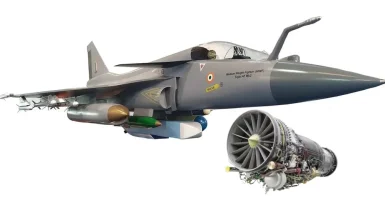- Views: 802
- Replies: 8

In a move towards greater self-reliance in defence technology, Hindustan Aeronautics Limited (HAL) is set to integrate a domestically developed quartz radome into the Tejas Mk1A fighter jet. This shift is expected to commence with the second batch of 97 Tejas Mk1A aircraft currently being considered for acquisition by the Indian Air Force (IAF).
The radome, a crucial component protecting the jet's Active Electronically Scanned Array (AESA) radar, is currently sourced from the UK-based company Cobham. Sources indicate that the indigenous radome, developed within India, will soon be subjected to rigorous testing to evaluate its performance and suitability.
The decision to transition to the indigenous radome hinges on the successful completion of these tests. The new radome must demonstrate equivalent or superior capabilities compared to its imported counterpart. Key performance parameters include radar transparency, structural integrity, and resilience in demanding operational conditions.
Should the indigenous radome meet the stringent requirements of the IAF, it will signify a major step forward for India's defence industry. This achievement would not only reduce reliance on foreign suppliers but also pave the way for further advancements in domestic fighter jet programs.
The AESA radar, a critical sensor system in modern fighter aircraft, relies heavily on the radome for optimal performance. The radome's function is to protect the radar antenna while minimizing signal distortion, thus ensuring maximum radar efficiency. A high-performing radome is essential for the Tejas Mk1A to effectively fulfill its multi-role combat capabilities.
This development aligns with India's ongoing efforts to bolster its indigenous defence manufacturing capabilities and reduce dependence on imports. The successful integration of the locally developed radome would be a testament to the growing technological prowess of the Indian defence sector.






